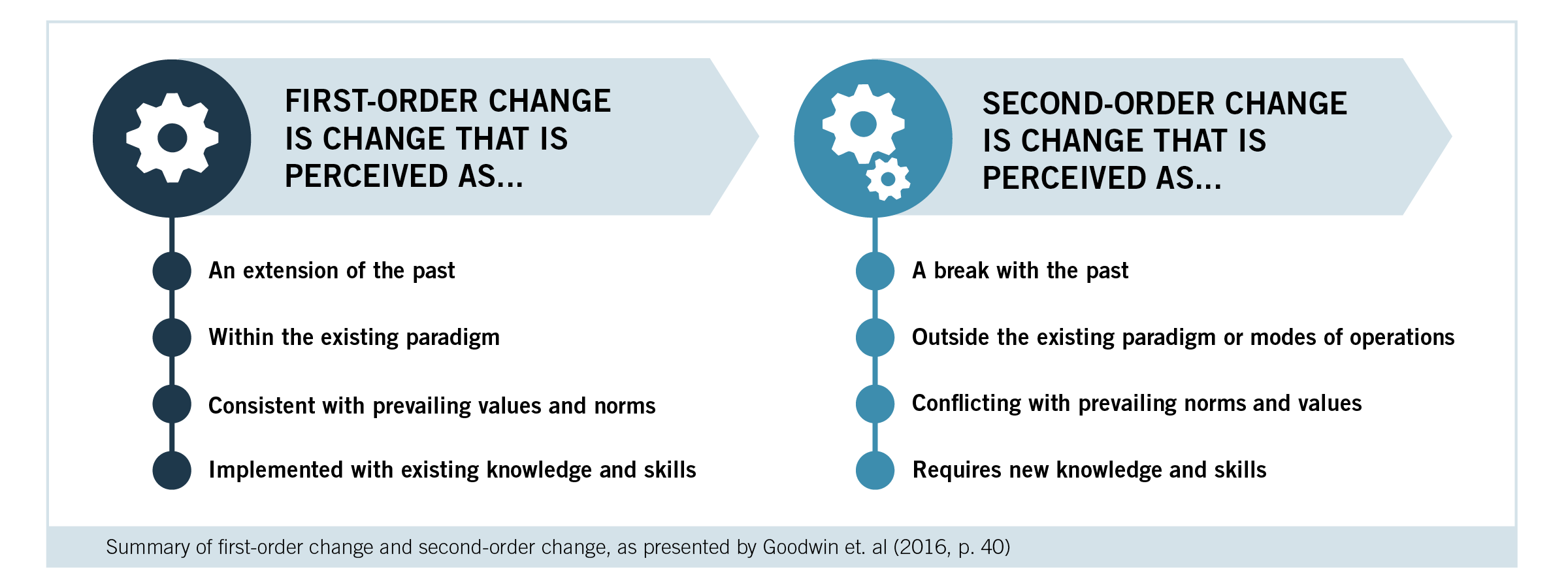Exciting as it may be, the design of a new school is a process of significant change. All stakeholders involved, from students up to district-level administrators, can be impacted when a new building is introduced to a community. Across building levels, principals have described various strategies to successfully navigate the transition to a new facility, including intentional preparations prior to the transition, tailored support throughout the transition, and managed expectations following the transition.
Research on change shows that all change processes include a degree of loss, and that one key element to a successful change process is allowing individuals to grapple with that loss1,2. Providing opportunities for students, staff, and community members to process the loss of a building prior to replacing it can help them to collectively work through that challenge, while also building excitement around the new facility.
At any point in the life of a school, a shared mission and vision are paramount to success, promoting a strong and positive culture and successful and collaborative teaching processes1. As a school embarks on the process of designing and transitioning to a new facility, this may be a prime opportunity to recalibrate existing goals and outline new ones as they relate to opportunities and instructional approaches the new space supports.
during THE TRANSITION
Scholars who study change categorize the process in orders of magnitude; either first-order or second-order change.

Key to understanding change processes is realizing that what may be first-order change for one person could just as well be second-order change for another3. Providing support to staff members as they manage their individual change process will help to facilitate successful transitions for staff experiencing the change in any magnitude.
after THE TRANSITION
After a year or two have passed in the new building, it may feel like the transition period has ended. However, maintaining a mindset that this transition will extend over a longer period prepares staff to continuously re-evaluate practices and uses of space, rather than assuming they got it right the first time. Anticipating a longer transitional period can be a great strength to principals embarking on this process, accounting for the time it takes to work out the kinks of operating in the new building, as well as to respond to changes occurring in the district and school community.
Approaching such a significant transition can be a challenge, but when this change process is navigated effectively, schools may benefit not only from positive influence to their culture and increased resilience4, but also more productive use of the new facility, as staff will view it not as an inhibitor to their practice and a representation what they’ve lost, but as an asset to their work and a symbol of their success.

Research Director

Research Support
Share this post:
References
1: Bailey, J. R., & Raelin, J. D. (2015). Organizations don’t resist change, people do: Modeling individual reactions to organizational change through loss and terror management. Organization Management Journal, 12(3), 125-138.
2: Marris, P. (1974). Loss and change. Routledge & K. Paul.
3: Bartunek, J. M., & Moch, M. K. (1987). First-order, second-order, and third-order change and organization development interventions: A cognitive approach. The Journal of Applied Behavioral Science, 23(4), 483-500.
4: Goodwin, B., Cameron, G., & Hein, H. (2016). Balanced leadership for powerful learning: Tools for achieving success in your school. McREL International.